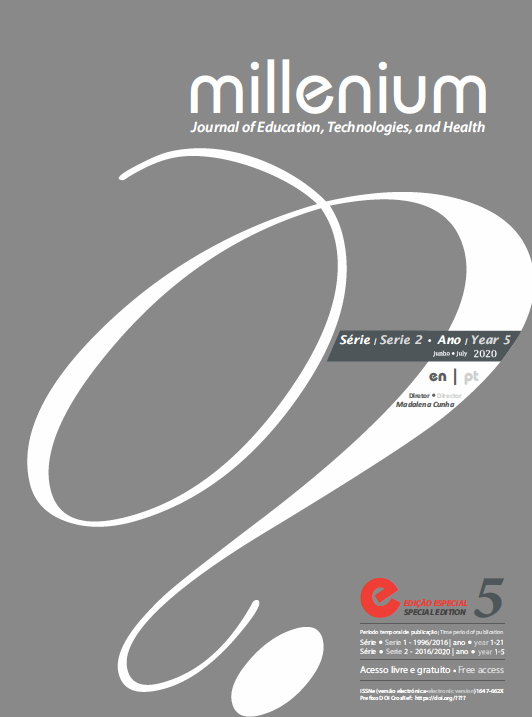Cancer rehabilitation
framing the role of the rehabilitation nurse
DOI:
https://doi.org/10.29352/mill0205e.23.00316Keywords:
rehabilitation nurse, nursing, rehabilitation, cancerAbstract
Introduction: The innovations that happened in the last decades in the different therapeutic modalities, in which the treatment strategies used in the oncological disease stood out, are associated with a growing interest for the potentiality of rehabilitation in the person who has been diagnosed with cancer, since they are part of a specific population with particular needs.
Objetives: The goal of this review is to consider the effort made by rehabilitation nursing to plan its part in the rehabilitation of cancer patients. This reflection includes specialized clinical practice, education, investigation and a description of the professional organizations’ role.
Methods: A narrative review was performed.
Results: Rehabilitation Nurses (RN) have the skills to provide care to people diagnosed with oncological disease with limitations in their self-care, reduced mobility and social interactions, in transient or irreversible stages of the disease, as well as with normal limitations resulting from aging.
Conclusions: The intervention of RN, in this practical context, contributes to symptom control, minimizes the manifestations of the oncological disease and/or the sequels associated with treatments and promotes autonomy. At the same time, RN intends to help people live with meaning and quality of life, in all stages of the disease, may this be temporary, advanced and progressive or irreversible.
Downloads
References
Alfano, C. M., & Pergolotti, M. (2018). Next-Generation Cancer Rehabilitation. Rehabilitation Nursing, 43(4), 186–194. DOI https://doi.org/10.1097/rnj.0000000000000174
American Cancer Society (2016). Cancer treatment and survivorship: Facts and figures 2016-2017. Atlanta, GA. Acedidol em https://www.cancer.org/content/dam/cancer-org/research/cancer-facts-and-statistics/cancer-treatment-and-survivorship-facts-and-figures/cancer-treatment-and-survivorship-facts-and-figures-2016-2017.pdf;
Associação Portuguesa dos Enfermeiros de Reabilitação (APER) (2010). Contributos para o plano nacional de saúde 2011-2016. Acedido em https://aper.pt/ficheiros/documentos/aper2.pdf
Caldeira, S. (2016). A Espiritualidade nos Cuidados de Enfermagem de Reabilitação in Marques-Vieira, C. & Sousa, L. Cuidados de Enfermagem de Reabilitação à Pessoa ao Longo da Vida. Loures: Lusodidacta. ISBN – 9789898075-73-4
Hesbeen, W. (2003). A Reabilitação: Criar novos caminhos. Loures: Lusociência. ISBN – 972-8383-43-6
Liga Portuguesa Contra o Cancro (2017). Portugal tem 500 000 sobreviventes de cancro e 100 000 doentes em tratamento. Acedido em https://www.ligacontracancro.pt/clipping/detalhe/url/portugal-tem-500-milsobreviventes-de-cancro-e-100-mil-doentes-em-tratamento/
Morris, G. S., Raj, V. S., Rowland, J., Chan, L., Stout, N. L., Gilchrist, L., … Cheville, A. (2016). Toward a National Initiative in Cancer Rehabilitation: Recommendations From a Subject Matter Expert Group. Archives of Physical Medicine and Rehabilitation, 97(11), 2006–2015 DOI. https://doi.org/10.1016/j.apmr.2016.05.002
Ordem dos Enfermeiros – Mesa do Colégio da Especialidade de Enfermagem de Reabilitação (MCEER) (2018). Bilhetes de Identidade dos Indicadores do Core de Indicadores por Categoria de Enunciados Descritivos dos Padrões de Qualidade dos Cuidados de Enfermagem de Reabilitação. Acedido em https://www.ordemenfermeiros.pt/media/5443/enfermagemreabilitacao.pdf
Ordem dos Enfermeiros - Assembleia do Colégio da Especialidade de Enfermagem de Reabilitação (24 de Jan de 2015). Core de indicadores por categoria de enunciados descritivos dos padrões de qualidade dos cuidados de enfermagem de reabilitação (PQCER). Lisboa. Acedido em https://www.ordemenfermeiros.pt/arquivo/colegios/Documents/2015/MCEER_Assembleia/Core_Indicadores_por_Categoria_de_Enunciados_Descrit_PQCER.pdf
Orem, D., Taylor, S., & Renpenning, K. (2001). Nursing: Concepts of Practice. St Louis, MO: Mosby. ISBN - 9780323008-64-8
Pestana, H. (2016). Cuidados de Enfermagem de Reabilitação: Enquadramento In Marques-Vieira, C. & Sousa, L. Cuidados de Enfermagem de Reabilitação à Pessoa ao Longo da Vida. Loures: Lusodidacta. ISBN – 9789898075-73-4
Petronilho, F., & Machado, M. (2016). Teorias de Enfermagem e Autocuidado: Contributos para a construção do cuidado de reabilitação in Marques-Vieira, C. & Sousa, L.. Cuidados de Enfermagem de Reabilitação à Pessoa ao Longo da Vida. Loures: Lusodidacta. ISBN – 9789898075-73-4
Regulamento nº 392/2019. Regulamento das competências específicas do Enfermeiro Especialista em Enfermagem de Reabilitação. Diário da República n.º 85/2019, Série II de 2019-05-03. Ordem dos Enfermeiros. Disponível em: https://dre.pt/application/conteudo/122216893
Reigle, B., Campbell, G., & Murphy, K. (2017). Cancer Rehabilitation and the Role of the Rehabilitation Nurse. ARN. Acedido em https://rehabnurse.org/uploads/membership/FINAL_CANCER_REHAB_POSITIO N_PAPER.pdf
Reis, G., & Bule, M. J. (2016). Capacitação e Atividade de Vida in Marques-Vieira, C. & Sousa, L. Cuidados de Enfermagem de Reabilitação à Pessoa ao Longo da Vida. Loures: Lusodidacta. ISBN – 9789898075-73-4
Santos, A., Pêla, J., Ferreira, M., & Trindade, N. (2014). O Papel da Enfermagem de Reabilitação nos Cuidados Paliativos in Costa, A. & Othero, M. Reabilitação em Cuidados Paliativos. Loures: Lusodidacta. ISBN – 9789898075-41-3
Organização Mundial de Saúde (OMS) (2019). Rehabilitation in health systems: guide for action. Genebra. ISBN 978–92–4-151598–6. Acedido em https://www.who.int/rehabilitation/rehabilitation-guide-for-action/en/
Organização Mundial de Saúde (OMS) (2018) – Cancer. World Health Organization Web site. Acedido em https://www.who.int/news-room/fact-sheets/detail/cancer
Downloads
Published
How to Cite
Issue
Section
License
Authors who submit proposals for this journal agree to the following terms:
a) Articles are published under the Licença Creative Commons (CC BY 4.0), in full open-access, without any cost or fees of any kind to the author or the reader;
b) The authors retain copyright and grant the journal right of first publication, allowing the free sharing of work, provided it is correctly attributed the authorship and initial publication in this journal;
c) The authors are permitted to take on additional contracts separately for non-exclusive distribution of the version of the work published in this journal (eg, post it to an institutional repository or as a book), with an acknowledgment of its initial publication in this journal;
d) Authors are permitted and encouraged to publish and distribute their work online (eg, in institutional repositories or on their website) as it can lead to productive exchanges, as well as increase the impact and citation of published work
Documents required for submission
Article template (Editable format)





